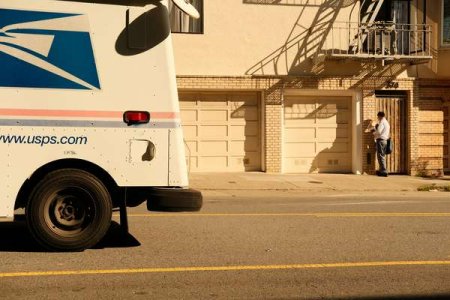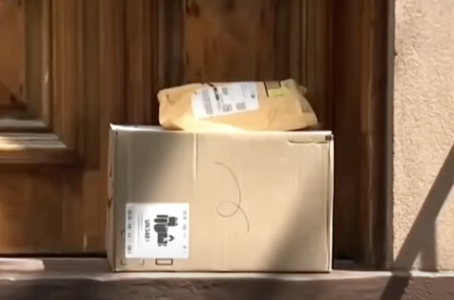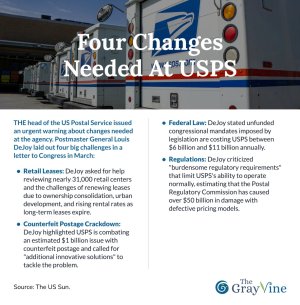Think twice before opening that package—USPS flags major privacy risk
- Replies 0
Imagine opening your door to find a package you didn't order.
At first, it might feel like an unexpected gift, but the United States Postal Service (USPS) has issued a stark warning: this could be a sign that your personal information has been compromised.
The phenomenon, known as “brushing,” is more than just a quirky mystery—it's a serious data breach concern that's on the rise.
Brushing scams involve the unsolicited delivery of random parcels or inexpensive products. While receiving free items might seem harmless or even lucky, the reality is far more sinister.
These packages are part of a scheme to create fake reviews and boost seller ratings online.
The scammers use stolen names and addresses to send these items, creating the illusion of legitimate transactions and satisfied customers.
The USPS has seen an uptick in these scams, particularly during the holiday season when the volume of deliveries can make it easier for brushing packages to blend in with regular mail.

But the implications of receiving such a package are far-reaching. It means that somewhere out there, a fraudster has access to your personal details.
Some brushing packages may include printed QR codes that, when scanned, can lead to data theft.
The USPS advises extreme caution, urging customers not to scan codes or click on any links from unknown sources. These could be gateways to phishing attempts, designed to extract even more of your sensitive information.
In response to the growing threat of brushing and other delivery scams, the USPS is stepping up its game as part of its 10-year “Delivering for America” initiative. This $40 billion plan aims to secure and modernize mail delivery across the nation, ensuring a high-performing and financially stable postal service for future generations.
You might need this info: USPS is rolling out major updates and customers are being urged to prepare
The initiative also focuses on preventing mail-related crimes and protecting postal carriers from the rising incidents of violence.
The USPS works in close collaboration with the US Postal Inspection Service, the nation's oldest federal law enforcement agency, to combat these threats.

What to Do If You Receive a Brushing Package
If you find yourself in possession of a brushing package, the USPS provides clear guidance:
1. Report it to the US Postal Inspection Service to help them track and combat this fraudulent activity.
2. You may keep the item, dispose of it, or return it to the sender. However, be cautious of any further interaction that could compromise your data.
3. Stay vigilant against phishing and smishing attacks, which often impersonate USPS communications to lure victims into clicking malicious links.
Also read: USPS reveals the truth about undelivered packages and why some customers are left in limbo
Beyond brushing scams, the USPS is facing broader challenges that Postmaster General Louis DeJoy has brought to Congress's attention.
These include issues with retail leases, counterfeit postage, unfunded congressional mandates, and restrictive regulatory requirements.
DeJoy's call for action underscores the need for systemic changes to ensure the USPS can continue to serve the American public effectively.
Source: 6abc Philadelphia / Youtube.
Protecting Yourself and Your Information
Here are some steps you can take to protect yourself from brushing scams and other forms of postal fraud:
- Monitor your credit reports and bank statements for any unauthorized activity.
- Be skeptical of unsolicited packages, and avoid interacting with any enclosed materials that could be traps for data theft.
- Educate your friends and family about these scams, especially those who may not be as familiar with such fraudulent practices.
Read next: Forever no more? Stamp price hike ahead

Have you or someone you know ever received a mysterious package that turned out to be part of a brushing scam? How did you handle it? Do you have additional tips for safeguarding personal information against such threats? Share your stories and advice in the comments below!
At first, it might feel like an unexpected gift, but the United States Postal Service (USPS) has issued a stark warning: this could be a sign that your personal information has been compromised.
The phenomenon, known as “brushing,” is more than just a quirky mystery—it's a serious data breach concern that's on the rise.
Brushing scams involve the unsolicited delivery of random parcels or inexpensive products. While receiving free items might seem harmless or even lucky, the reality is far more sinister.
These packages are part of a scheme to create fake reviews and boost seller ratings online.
The scammers use stolen names and addresses to send these items, creating the illusion of legitimate transactions and satisfied customers.
The USPS has seen an uptick in these scams, particularly during the holiday season when the volume of deliveries can make it easier for brushing packages to blend in with regular mail.

The United States Postal Service has warned customers about a delivery scam called “brushing” that involves sending unsolicited parcels to customers. Image source: Sean Boyd / Unsplash.
But the implications of receiving such a package are far-reaching. It means that somewhere out there, a fraudster has access to your personal details.
Some brushing packages may include printed QR codes that, when scanned, can lead to data theft.
The USPS advises extreme caution, urging customers not to scan codes or click on any links from unknown sources. These could be gateways to phishing attempts, designed to extract even more of your sensitive information.
In response to the growing threat of brushing and other delivery scams, the USPS is stepping up its game as part of its 10-year “Delivering for America” initiative. This $40 billion plan aims to secure and modernize mail delivery across the nation, ensuring a high-performing and financially stable postal service for future generations.
You might need this info: USPS is rolling out major updates and customers are being urged to prepare
The initiative also focuses on preventing mail-related crimes and protecting postal carriers from the rising incidents of violence.
The USPS works in close collaboration with the US Postal Inspection Service, the nation's oldest federal law enforcement agency, to combat these threats.

Brushing is used to create fake reviews and involves the use of stolen personal information for the deliveries. Image source: NBC10 Boston / Youtube.
What to Do If You Receive a Brushing Package
If you find yourself in possession of a brushing package, the USPS provides clear guidance:
1. Report it to the US Postal Inspection Service to help them track and combat this fraudulent activity.
2. You may keep the item, dispose of it, or return it to the sender. However, be cautious of any further interaction that could compromise your data.
3. Stay vigilant against phishing and smishing attacks, which often impersonate USPS communications to lure victims into clicking malicious links.
Also read: USPS reveals the truth about undelivered packages and why some customers are left in limbo
Beyond brushing scams, the USPS is facing broader challenges that Postmaster General Louis DeJoy has brought to Congress's attention.
These include issues with retail leases, counterfeit postage, unfunded congressional mandates, and restrictive regulatory requirements.
DeJoy's call for action underscores the need for systemic changes to ensure the USPS can continue to serve the American public effectively.
Source: 6abc Philadelphia / Youtube.
Protecting Yourself and Your Information
Here are some steps you can take to protect yourself from brushing scams and other forms of postal fraud:
- Monitor your credit reports and bank statements for any unauthorized activity.
- Be skeptical of unsolicited packages, and avoid interacting with any enclosed materials that could be traps for data theft.
- Educate your friends and family about these scams, especially those who may not be as familiar with such fraudulent practices.
Read next: Forever no more? Stamp price hike ahead
Key Takeaways
- The United States Postal Service has warned customers about a delivery scam called “brushing” that involves sending unsolicited parcels to customers.
- Brushing is used to create fake reviews and involves the use of stolen personal information for the deliveries.
- The USPS advises that if recipients receive a brushing package, they should report it and avoid scanning QR codes or clicking links that could lead to data theft.
- The Postmaster General has highlighted the need for changes at USPS, including addressing issues with retail leases, counterfeit postage, unfunded congressional mandates, and burdensome regulatory requirements.
Have you or someone you know ever received a mysterious package that turned out to be part of a brushing scam? How did you handle it? Do you have additional tips for safeguarding personal information against such threats? Share your stories and advice in the comments below!
Last edited:







